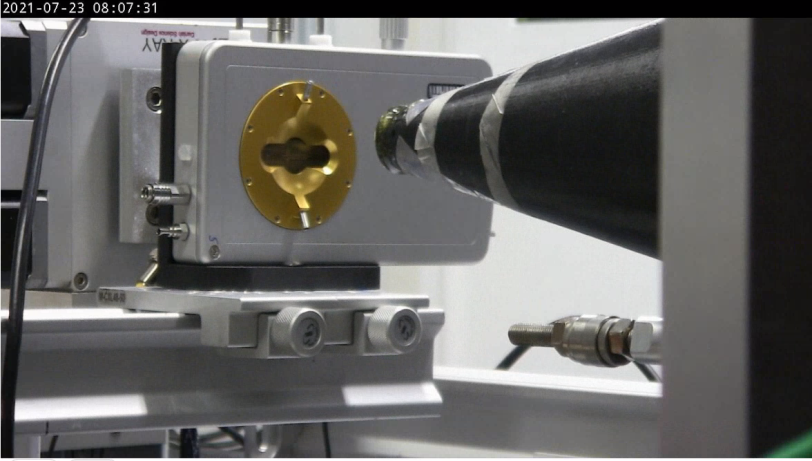Soap study shows the value of global connections during the pandemic
Researchers at the University of Leeds deepened their understanding of a synthetic detergent without ever setting foot in the lab where their experiments took place.
By running remote experiments at the U.S. Department of Energy’s SLAC National Accelerator Laboratory, researchers at the University of Leeds have advanced their research into the complex molecular structure of soaps.
Faidat Braimoh and Thomas Barber, graduate students in the university’s School of Chemical and Process Engineering, wanted to carry out the experiments on the detergent sodium lauroyl isethionate to better understand how it crystalizes as it cools after being exposed to varying temperatures over different amounts of time. Such research could aid the design of more effective detergents, the researchers said.

But when Braimoh, Barber and their advisers, Leeds faculty David Harbottle and Kevin Roberts, conducted experiments using local facilities, they could tell something was happening that their equipment was not quite sensitive enough to discern. They would need, they realized, to collect data more rapidly to achieve their goals.
With that in mind, the team turned to SLAC’s Stanford Synchrotron Radiation Lightsource (SSRL), one of the few facilities in the world that could collect data rapidly enough to meet the team’s needs – and where it was possible to do so without ever crossing the Atlantic.
Plus, Harbottle said, they already had a good working relationship with SSRL scientists. “Honestly, we like the team out there. They are very supportive. In this time when we’re remote because of the pandemic, it’s been very helpful.”
So, Barber said, they packed up samples of their detergent solution along with special equipment for precisely controlling the temperature of the material and sent them off to California.
Once the samples and equipment arrived, SSRL scientists installed them into an X-ray beamline designed to rapidly capture data on how materials change over time as conditions, such as temperature, evolve. Then, Braimoh and Barber controlled their experiments from Leeds with SSRL-designed software that allows researchers to do most of the experimental work remotely.
“The SSRL team was extremely helpful and went above and beyond to support our team,” Braimoh said. “We were given the full access and control needed to carry out the research. The level of training and support we received means we were well prepared to hit the ground running while continuing the research in a remote setting.”
Barber agreed. “Achieving the level of accuracy and precision needed to run the experiments required exceptional communication, as well as the ability to adapt to the inevitable challenges incurred by COVID-19.
“Overcoming challenges sparked by the pandemic strengthened our ability to communicate and work with SSRL to carry out research that otherwise would not have been possible with international travel restrictions.”
Note: this article is based on a release from the University of Leeds.
SSRL is a DOE Office of Science user facility.
Contact
For questions or comments, contact the SLAC Office of Communications at communications@slac.stanford.edu.
About SLAC
SLAC National Accelerator Laboratory explores how the universe works at the biggest, smallest and fastest scales and invents powerful tools used by researchers around the globe. As world leaders in ultrafast science and bold explorers of the physics of the universe, we forge new ground in understanding our origins and building a healthier and more sustainable future. Our discovery and innovation help develop new materials and chemical processes and open unprecedented views of the cosmos and life’s most delicate machinery. Building on more than 60 years of visionary research, we help shape the future by advancing areas such as quantum technology, scientific computing and the development of next-generation accelerators.
SLAC is operated by Stanford University for the U.S. Department of Energy’s Office of Science. The Office of Science is the single largest supporter of basic research in the physical sciences in the United States and is working to address some of the most pressing challenges of our time.





